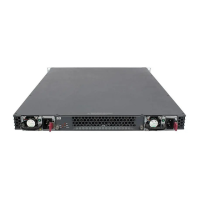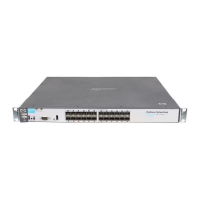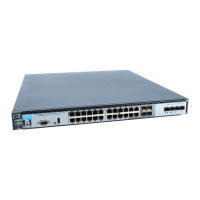6-24
Switch Memory and Configuration
Using Primary and Secondary Flash Image Options
Figure 6-16. Using Reload with Redundant Management and Pending Configuration Changes
Scheduled Reload. Additional parameters in the reload command allow for
a scheduled reboot of the switch via the CLI.
The scheduled reload feature removes the requirement to physically reboot
the switch at inconvenient times (for example, at 1:00 in the morning). Instead,
a reload at 1:00 mm/dd command can be executed (where mm/dd is the date
the switch is scheduled to reboot).
Note Configuration changes are not saved with reload at or reload after commands.
No prompt to save configuration file changes is displayed. See Table 6-2 on
page 6-21.
Examples of scheduled reload commands:
■ To schedule a reload in 15 minutes:
ProCurve# reload after 15
■ To schedule a reload in 3 hours:
ProCurve# reload after 03:00
■ To schedule a reload for the same time the following day:
ProCurve# reload after 01:00:00
■ To schedule a reload for the same day at 12:05:
ProCurve# reload at 12:05
■ To schedule a reload on some future date:
ProCurve# reload at 12:05 03/01/2009
ProCurve(config)# max-vlans 12
Command will take effect after saving configuration and reboot.
ProCurve(config)# reload
This command will cause a switchover to the other management module
which may not be running the same software image and configurations.
Do you want to continue [y/n]? y
Syntax: [no] reload [after <[dd:]hh:]mm> | at <hh:mm[:ss]> [<mm/dd[/[yy]yy]>]]
Enables a scheduled warm reboot of the switch. The switch boots
up with the same startup config file and using the same flash
image as before the reload.
Parameters include:
• after: Schedules a warm reboot of the switch after a given amount
of time has passed.
• at: Schedules a warm reboot of the switch at a given time.
The no form of the command removes a pending reboot request.
For more details and examples, see below.
